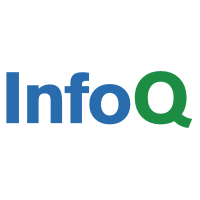
MMS • Shaaron A Alvares
Article originally posted on InfoQ. Visit InfoQ

BMW started their Agile and BizDevOps transformation in 2016. Ralf Waltram, head of R&D and Dr. Frank Ramsak, head of IT Governance, presented at DOES 2019 a state of their IT transformation journey to 100% agile, which represents according to them their largest transformation to date impacting their business model, as they are moving from being just car manufacturer to mobility providers. Waltram and Ramsak shared how they led their transformation, lessons and takeaways to help anyone who embarks on a new large agile and DevOps transformation.
BMW IT used to deliver large projects using waterfall methodology and had multiple applications with dependencies leading to releasing during weekends. IT was delivering using a bimodal IT model. 20 % of the development teams were leveraging agile and 80% were still waterfall. It became apparent that having 2 different ways of working and collaborating within IT meant for BMW having 2 different speeds and cultures. Teams on a 2-week sprint were delayed and impeded by the waterfall teams still working towards annual releases. The project structure naturally led to silos between development and operations. Work delivery also struggled from a silo between business and development. In order to address these 2 key challenges, IT moved from projects to products and to 100% BizDevOps to ensure a complete collaboration and transparency between IT and the business. They targeted 100% agile with the goal of being more flexible and developing a more customer-centric and value driven culture of execution, including a user experience capability.
BMW designed a holistic transformation approach focussed on 4 cornerstones: process, structure, technology and people and culture. Based on Waltram and Ramsak, the most important aspect of the change was to set up the people and the organizational culture to support lean and BizDevOps. They started with rolling out trainings and educating the organization about agile values and practices. They also structured the teams to bring the developers and operations together to form truly DevOps teams. They structured their IT portfolio around products and value streams allowing at portfolio level for minimum governance and maximum synchronization and autonomy. One of the most important change they made is how they fund their work. In the past, they funded projects and operations separately, and since 2019 they started funding products and teams to ensure that funding is tied to products and value. They also introduced new technologies to support microservice and cloud-based architectures to gradually replace their legacy monolithic applications. They developed an agile software development toolchain adopted today by 20,000 employees allowing them to streamline and synchronize their end to end development.
The business recognized the accomplishments and the value of the transformation. They saw an increase in release frequency that went from 12 per year to 2 per month and they saw a significant decrease in defects or in time to resolution.
Waltram and Ramsak recommended to have a bold transformation vision, but to start small with small increments and to scale up along the way. Working in small iterative increments allowed them to inspect and adjust the course very fast and learn along the way, which according to them is still a difficult thing to do in an organization driven by a culture of perfection and performance. They concluded by encouraging organizations to share and learn from other organizations and communities on how they transform their IT and business and scale their DevOps platform.